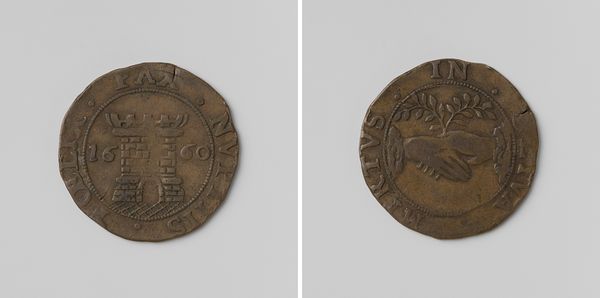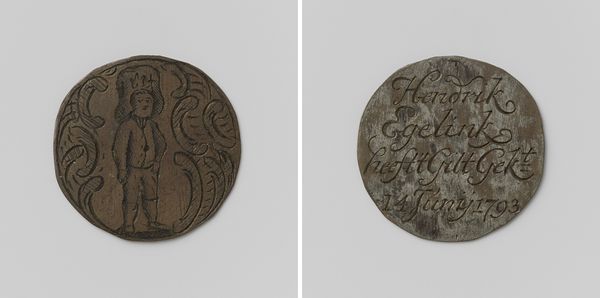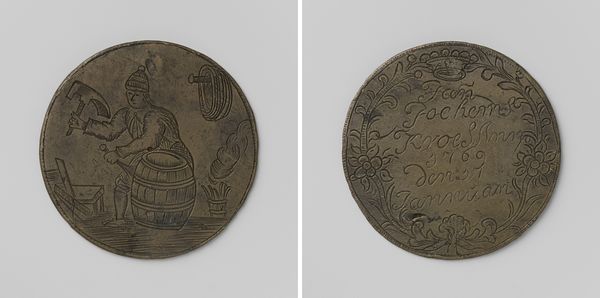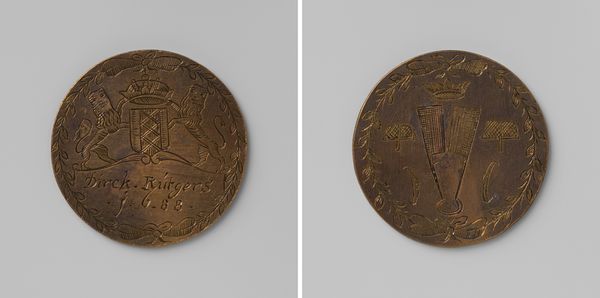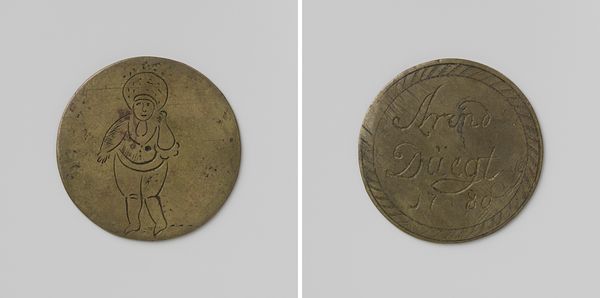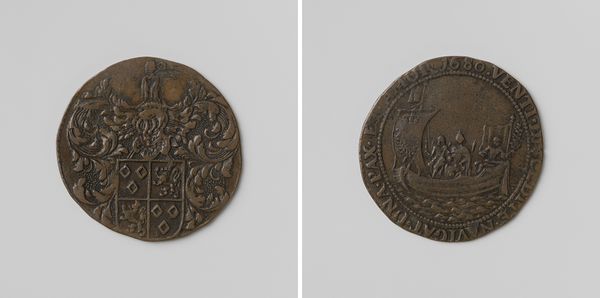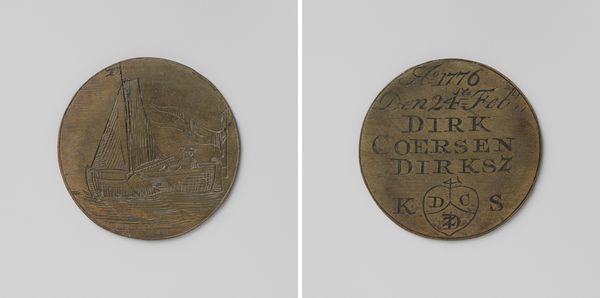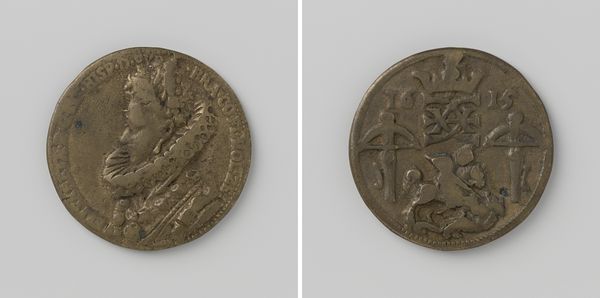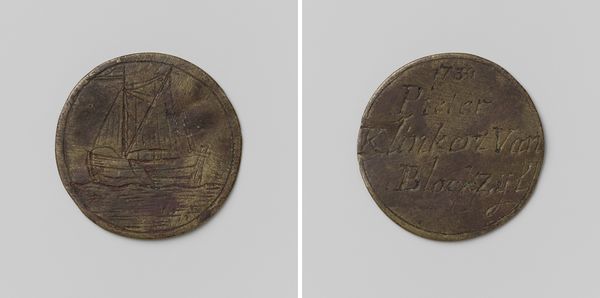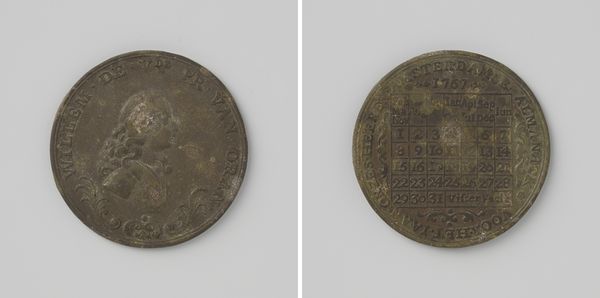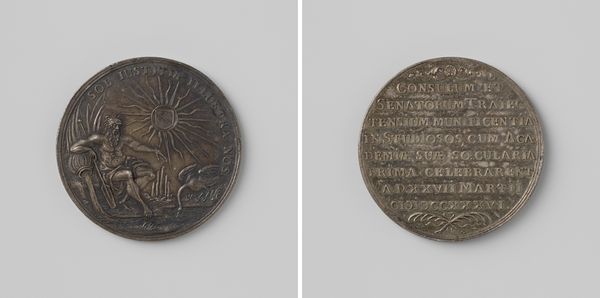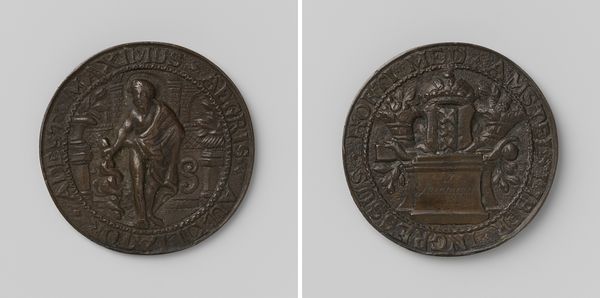
Korendragers- en -stortersgilde van Amsterdam, gildepenning van Jan Jacob de Leeuw 1792
0:00
0:00
print, metal, engraving
#
portrait
#
dutch-golden-age
# print
#
metal
#
engraving
Dimensions: diameter 3.4 cm, weight 5.14 gr
Copyright: Rijks Museum: Open Domain
This is a copper guild token made in Amsterdam in 1792. It commemorates Jan Jacob de Leeuw joining the guild of Korendragers- en -storters. This translates to grain carriers and unloaders, a vital occupation for a port city like Amsterdam. Guilds were powerful institutions in the Dutch Republic, regulating trades, setting standards, and providing social support to their members. This token would have served as a mark of membership, a visual symbol of belonging and legitimacy within the guild structure. The figure depicted carrying a large sack represents the labor and identity associated with this specific trade. To fully understand this object, we need to delve into Amsterdam's economic history, the guild system, and the social hierarchies of the time. Archival records, guild documents, and studies of Dutch trade can shed light on the lives of workers like Jan Jacob de Leeuw and the significance of this token in their world. Art history reminds us that meaning is always shaped by context.
Comments
No comments
Be the first to comment and join the conversation on the ultimate creative platform.
